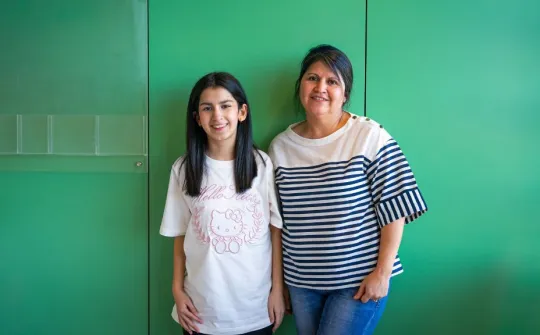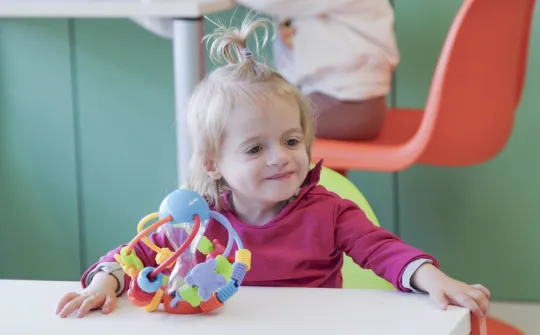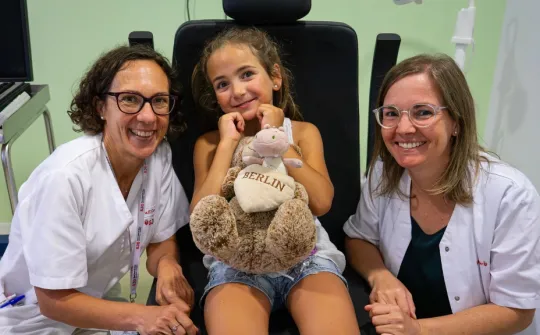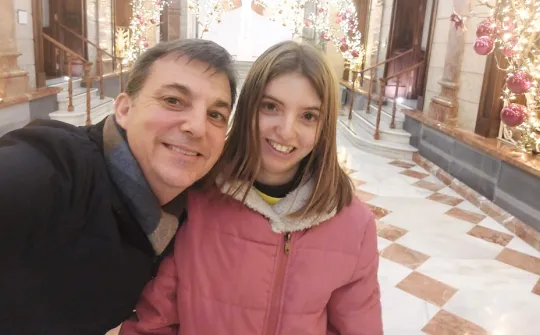"Our residents become coveted professionals at the end of their medical intern residency (MIR) at Sant Joan de Déu and Hospital Clínic"
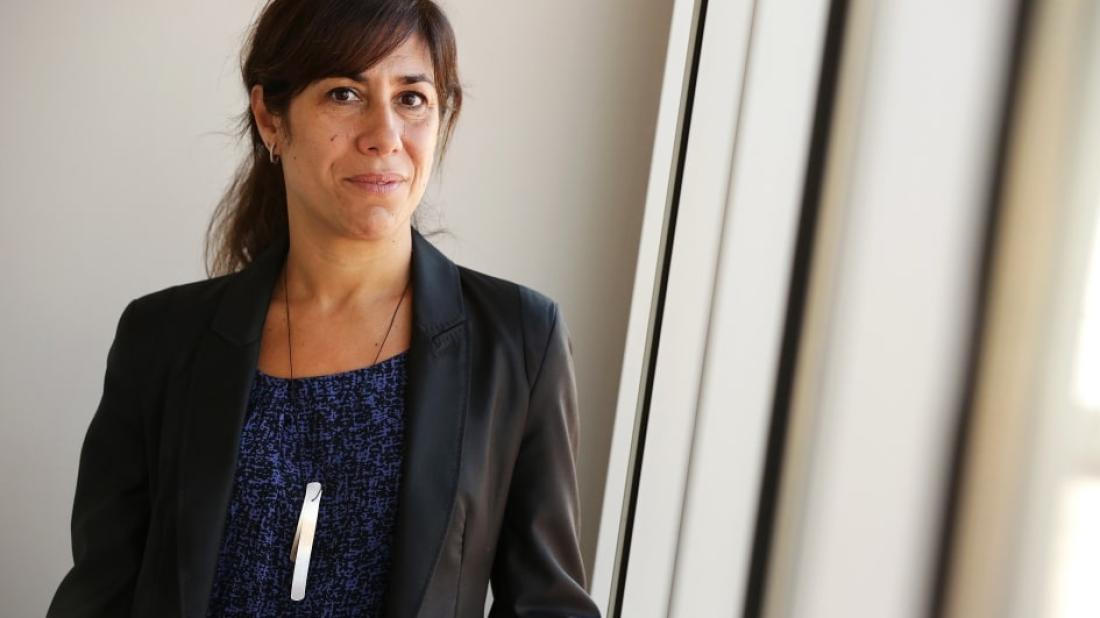
Lola Gómez is currently teaching coordinator for Obstetrics and Gynaecology, as well as Head of the Women's Health Area at SJD Barcelona Children's Hospital/BCNatal. An obstetrician and gynaecologist, Lola is also a post-doctoral researcher and director of the line of research on environment and pregnancy complications. At the head of Catalonia's first maternity hospital, which facilitates over 6,000 births per year, Gómez highlights the increase in gynaecology and oncology activities thanks to new training agreements.
Do the residents of SJD Barcelona Children's Hospital / Hospital Clínic become expert obstetricians or gynaecologists?
In this case they will finish their residencies with extensive knowledge in both specialities. The training agreements of recent years have allowed us to expand our training thanks to a rotation at the Hospital Clínic (specifically in the Assisted Reproduction Unit) and the Institut Català d'Oncologia (ICO) - Hospital de Bellvitge, where numerous cases of breast and gynaecological cancers can be seen. At our own centre, we work closely with the Darwin simulation programme, which is widely practised in the field of obstetrics and gynaecology and a laparoscopy simulationis also being implemented.
In the field of general gynaecology, our residents will acquire knowledge about uterine and cervical diseases, dysfunctional uterine bleeding, benign breast conditions, adnexal pathology and endometriosis, among other areas. They will also work in the Endocrinology and Reproduction Unit on the pelvic floor and on a specific area of adolescent care that only exists in Catalonia, where they will be able to care for girls and adolescents with different types of diseases that may have an impact on their gynaecological and reproductive health in the medium and long term. In all these areas they will learn about gynaecological ultrasound techniques, aimed at high-level diagnosis. In addition, our centre performs over 1,000 gynaecological interventions every year, and one day per week residents are in the operating room dealing with this type of pathology.
SJD Barcelona Children's Hospital is the most important maternity hospital in Catalonia: what obstetric experience can residents gain here?
Each year, our centre handles 65% of obstetric risk cases and care in the Obstetric Intermediate Care Unit, where residents are trained to deal with unusual cases or situations that require specialised management, is essential. The obstetrics training program is divided into low and high risk. In high-risk obstetrics they will be able to learn from cases of maternal and fetal pathology (placental pathology, prematurity, maternal infectious pathology) and the usual fetal medicine clinic (they will become familiar with echocardiography and neurosonography).
How has the residency changed in recent years?
I was a resident at SJD Barcelona Children's Hospital myself between 1994 and 1998, and since then increases in complexity and specialisation have significantly improved the department. All units have leading specialists in specific pathologies, something that contributed to the agreement with BCNatal, which has led to an increase in subspecialisation. Among many other areas, our professionals are leaders in fetal and pelvic floor pathologies, and also have leading research lines throughout Europe. In the context of our work with Hospital Clínic, joint cases, protocols and scientific evidence are reviewed and a session focused on fetal pathology is conducted each week.
Furthermore, our residents will work under high quality and safety indicators (our hospital currently has the highest rating in all of Catalonia). This involves a level of demand, learning and excellence that is hard to find in other centres. It also prioritises multidisciplinary and compassionate care, as well as support and respect for the decisions of each patient. We are a centre of excellence not only due to our level of clinical care but also because of how the women we care for feel about their treatment.
What are residents' employment prospects like once they finish their training here?
Many of our residents receive job offers from other centres before they finish their fourth year. The knowledge acquired and the patient care philosophy at our centre are particularly valued. For those who want to stay on, it is possible to complete a doctoral thesis in one of our six main lines of research, and also to continue working through on-call shifts and research projects. In short, residents of the SJD Barcelona Children's Hospital and Hospital Clínic are among the most sought-after specialists in obstetrics and gynaecology, both in Catalonia and Spain.
